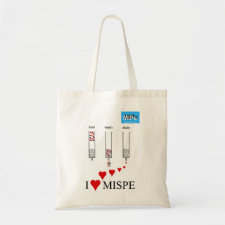
Authors: Rodriguez-Mozaz S, Lopez de Alda MJ, Barceló D
Article Title: Advantages and limitations of on-line solid phase extraction coupled to liquid chromatography-mass spectrometry technologies versus biosensors for monitoring of emerging contaminants in water.
Publication date: 2007
Journal: Journal of Chromatography A
Volume: 1152
Issue: (1-2)
Page numbers: 97-115.
DOI: 10.1016/j.chroma.2007.01.046
Alternative URL: http://www.sciencedirect.com/science/article/B6TG8-4MVF4XF-8/2/401aaab20e1f6ae137357e4d142404a1
Abstract: On-line solid phase extraction (SPE) coupled to liquid chromatography-mass spectrometry (LC-MS) and biosensors are advanced technologies that have found increasing application in the analysis of environmental contaminants although their application to the determination of emerging contaminants (previously unknown or unrecognized pollutants) has been still limited. This review covers the most recent advances occurred in the areas of on-line SPE-LC-MS and biosensors, discusses and compares the main strengths and limitations of the two approaches, and examines their most relevant applications to the analysis of emerging contaminants in environmental waters. So far, the on-line configuration most frequently used has been SPE coupled to liquid chromatography-(tandem) mass spectrometry. Sorbents used for on-line SPE have included both traditional (alkyl-bonded silicas and polymers) and novel (restricted access materials (RAMs), molecularly imprinted synthetic polymers (MIPs), and immobilized receptors or antibodies (immunosorbents) materials. The biosensor technologies most frequently applied have been based on the use of antibodies and, to a lesser extent, enzymes, bacteria, receptors and DNA as recognition elements, and the use of optical and electrochemical transducing elements. Emerging contaminants investigated by means of these two techniques have included pharmaceuticals, endocrine disrupting compounds such as estrogens, alkylphenols and bisphenol A, pesticides transformation products, disinfection by-products, and bacterial toxins and mycotoxins, among others. Both techniques offer advantageous, and frequently comparable, features such as high sensitivity and selectivity, minimum sample manipulation, and automation. Biosensors are, in addition, relatively cheap and fast, which make them ideally suited for routine testing and screening of samples; however, in most cases, they can not compete yet with on-line SPE procedures in terms of accuracy, reproducibility, reliability (confirmation) of results, and capacity for multi-analyte determination
Template and target information: Review - SPE coupled methods in water analysis
Author keywords: biosensor, On-line solid phase extraction, Emerging contaminants, water, analysis



Join the Society for Molecular Imprinting

New items RSS feed
Sign-up for e-mail updates:
Choose between receiving an occasional newsletter or more frequent e-mail alerts.
Click here to go to the sign-up page.
Is your name elemental or peptidic? Enter your name and find out by clicking either of the buttons below!
Other products you may like:
 MIPdatabase
MIPdatabase









